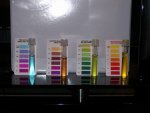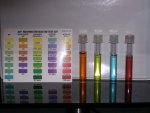Sean1364
New member
- Joined
- Jun 19, 2010
- Messages
- 128
- Reaction score
- 0
- Points
- 0
- Location
- Kalamazoo, MI
- Country
- United States
- Display Name
- Sean
Whenever I ask a question, everyone always asks me if my tank is cycled. Well, I don't know. I've read up on it, I test my water every day, and I always do huge water replacements. I just can't really translate my test results into a meaningful answer to the previous question. I know I ask a lot of annoying questions here, but I'm genuinely concerned about my Axolotls, and I want them to be healthy. If it's not too much trouble, would anyone be able to help put some language behind these test result colors?


